| Home>Myth>Article |
Susanoo's servant: Oyamatsumi
The following text is a slightly modified machine translation and may have some unnatural parts.
==Introduction==
The legend "The story of the giant Oyamatsumi" is recorded in "Myths and Legends of the Misumi Region" (Jitsuro Terai / ed.).
==Synopsis==
Oyamatsumi, who came to Misumi, was as tall as Mt. Fuji and straddled Mt. Yaune. Residents were surprised because each pair of shoes made an earthquake-like sound.
However, Oyamatsumi was an unexpectedly gentle man, and when he noticed the buzzing people, he said, "I'm sorry." When he sat down on Mt. Oyama in Okami, he called himself Susanoo's servant and said that he came to rule this land at the behest of Susanoo.
When he shook his foot, the mud on his foot flew away and a great amount of water smoke came from the sea. When it was settled, an island was created. Takashima, Shikashima, and Oshima. Now that many smaller islands have been created, it has become easier to catch fish and shellfish.
Oyamatsumi broke wind this time. Then, when it made a big hole in the ground and hit the bottom of the ground, it turned around and blew it up to the ground. This is Mt. Sanbe.
Oyamatsumi made feces after the flatulence. Waiting for the night to come, he hung his feet on Mt. Isari and Mt. Ashiya and dripped dung all night. This dung piled up and became Ino's large dung mountain (Oguso-yama / Noyama-dake). So the crop was good without fertilizer.
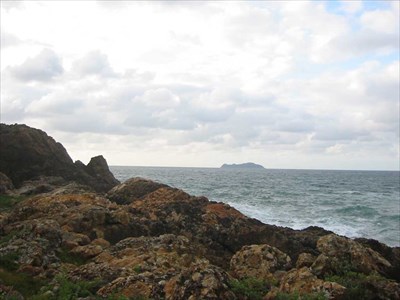
Takashima Island
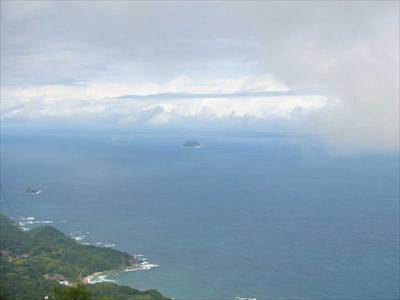
Shikashima Island
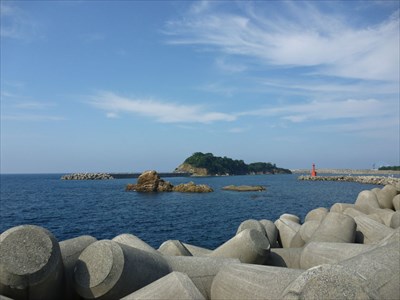
Oshima Island
==Oyamatsumi==
Oyamatsumi is a god born between Izanagi and Izanami. In the Nihon Shoki, it occurs when Izanagi slashes the god of Kagutsuchi.
Ashinazuchi and Tenazuchi, who appear in Yamata no Orochi mythology, are the children of Oyamatsumi.
In addition, KonohanaSakuyahime, the wife of Ninigi, is the child of Oyamatsumi. Oyamatsumi offered both KonohanaSakuyahime and Iwanagahime, but Ninigi returned Iwanagahime because Iwanagahime didn't look good. Therefore, eternal life like a rock was lost like a flower.
Iwa means rock.
In Kiki mythology, Tenson (Descendants of Heavenly God) marries the daughter of Oyamatsumi (god of mountain) and the daughter of Watatsumi (god of sea). In other words, it means gaining control of the mountains and the sea.
As an original myth of Iwami, in the legend of Sahime, Oyamatsumi is the father of the giant Ashinazuchi (Ashinagatsuchi) and the Okami god.
==Mt. Oguso==
The feature of "Myths and Legends of the Misumi Region" is that Oyamatsumi is a servant of Susanoo. It is also a tale that crops grow well at Mt. Noyama-dake (Mt. Oguso) in Ino. This is because the weathered soil of basalt becomes a natural fertilizer.
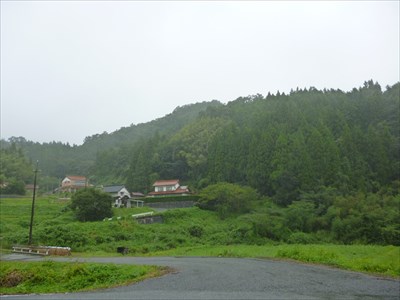
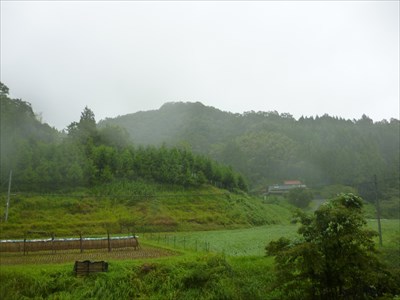
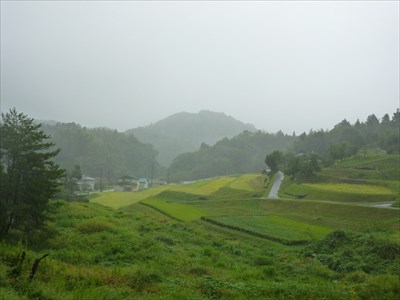
Mt. Noyamadake
:http://www.geo.shimane-u.ac.jp/geopark/noyamadake.html
There is a site of Shimane University called "Basalts of Noyamadake", a geosite in the Iwami region. Looking at the illustration of it, Noyamadake looks like a breakout of the earth.
==Clan migration==
"Myths and Legends of the Misumi Region" explains as follows. Looking back on ancient times, Izumo's power at that time was not limited to Izumo country, but to a wide range. It goes without saying that the Iwami region was put under the influence of Susanoo, but the Izumo tribe must have attacked this region under the command of someone at first. Terai thinks the commander was Oyamatsumi. This view of pioneering by clan migration is also a feature found in "Myths and Legends of the Misumi Region".
==dwarf legend==
"The survey of Japanese Legend Vol. 11 Sanin (Tottori / Shimane)" "Legend of Izumo / Iwami Japanese Legend 48" contains not only the legend of giants but also the legend of dwarfs. In other words, these giant legends originally existed independently of the legend of Oyamatsumi.
Misumi Town was an area where tatara steelmaking was popular. It seems that the traces of tatara look like the footprints of a giant.
It is said that dwarfs come from the northwest of Ino Village, pass through Ochiai, pass through Okamijo, Jumon, Oiya, Tochishita, etc., and there are traces of canes and footprints.
==References==
- * 『出雲・石見の伝説 日本の伝説48』(酒井董美, 萩坂昇, 角川書店, 1980)pp.100-101
- * 『随筆 石見物語(復刻版)』(木村晩翠, 白想社, 1993)pp.230-231
- * 『日本伝説大系 第11巻 山陰(鳥取・島根)』(野村純一他, みずうみ書房, 1984)
- * 『三隅地方の神話と伝説』(寺井実郎/編, 三隅時報社, 1960)pp.9-12